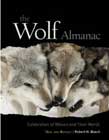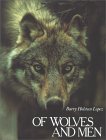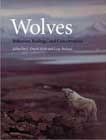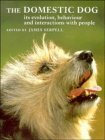Books on Animals
Dogs: Origins, canine evolution and wolves
If you want to buy a book, clicking on the book
cover will take you directly to that book on the Amazon.co.uk web site.
See also:
 Dogs:
General Dogs:
General
 Dogs:
Health and Nutrition Dogs:
Health and Nutrition
 Dogs:
Books on single breeds Dogs:
Books on single breeds
 Dogs: Puppy and manners training Dogs: Puppy and manners training
 Dogs: Skills training: Agility and training games Dogs: Skills training: Agility and training games
 Dogs: Skills training:Sheepdog, gundog and scent work Dogs: Skills training:Sheepdog, gundog and scent work
 Dogs: Behaviour and training philosophies Dogs: Behaviour and training philosophies
 Dogs:
Breeding and kennel management Dogs:
Breeding and kennel management
 Dogs: Fiction
and biography relating to dogs Dogs: Fiction
and biography relating to dogs
 Stamps featuring wild canids Stamps featuring wild canids |
 |
|
|
|
|
|

Click on the cover above
to go to this book
at Amazon.co.uk
|

The Wolf Within
Shaun Ellis
Publisher: Harper (3 Feb 2011)
ISBN-10: 000732717X
ISBN-13: 978-0007327171
If you haven´t read any Shaun Ellis, this is the book to start with. If you have, you may already know this book under its original title, The Man Who Lives With Wolves, which has now been published again under this new title. So beware, this isn't a new book of his, just a new title!
Shaun Ellis came from Norfolk, England, and travelled to the US, where he studied wolves. He decided to live a very spartan life among wolves back in England, and this is his story, with observations of what he has seen. He links wolf behaviour with that of dogs. While what he says is very interesting, it's worth remembering that dogs do differ from wolves in many ways, and some dogs are more wolf-like than others. This means that wolves don't provide all the keys to unlocking the mysteries of canine behaviour. However, it's a gripping tale which gives you many insights into wolves, and you can't help admiring Shaun Ellis´s grit and determination.
 Top
of page Top
of page
|

Click on the cover above
to go to this book
at Amazon.co.uk
|

The Wolf Talk
Shaun Ellis
Publisher: Rainbow Publishing; 1st ed (6 Mar 2003)
Language English
ISBN-10: 189905703X
ISBN-13: 978-1899057030
Shaun Ellis spent two years living with a pack of wolves in the US, without being in touch with humans, and this experience gave him a very special understanding of wolves. He has two packs of wolves at a wildlife park in England, and spends his time with them. His life is a gripping adventure story for anyone fascinated by wild animals. His love of wolves, and dedication to the task of understanding them shine through in this book. This book came out after The Wolf Within, so continues the story - The Wolf Within was first published as The Man Who Lives With Wolves, so that is the one to start off with to see if you enjoy Shaun Ellis.
 Top
of page Top
of page
|

Click on the cover above
to go to this book
at Amazon.co.uk
|

World of Wolves: New Perspectives on Ecology, Behaviour, and Management (Energy, Ecology, and the Environment)
Marco Musiani (Editor), Luigi Boitani (Editor)
University of Calgary Press (28 Feb 2010)
ISBN-10: 9781552382691
ISBN-13: 978-1552382691
ASIN: 1552382699
This is a collection of case studies from different parts of the world, which is especially valuable, because much of the literature on wolves comes from the US, and less has appeared on wolves elsewhere. The contexts in which wolves live affect their behaviour, and this becomes obvious when you start looking at wolves in environments where livestock management practices vary according to human culture. This is a serious study, rather than a light read. If you want something about wolves that is easier to read, try Shaun Ellis, but if you have a serious interest in wolves, how they coexist with humans, evolution, and ecosystems, this book will interest you.
 Top
of page Top
of page
|

Click on the cover above
to go to this book
at Amazon.co.uk
|

Dog behaviour, Evolution and Cognition
Adam Miklosi
OUP Oxford; 1 edition (4 Dec 2008)
ISBN-10: 0199545669
ISBN-13: 978-0199545667
This is a very important book, first because the author is part of a pioneering team which has been studying dog-human social interactions, using an ethological approach, since 1994. The head of the research team, Vilmos Csanyi, argues that dogs need social understanding to succeed in the human social world, and that this understanding probably came about as dogs evolved.
Click here to read the rest of this review
 Top
of page Top
of page
|

Click on the cover above
to go to this book
at Amazon.co.uk
|

Biology and Conservation of Wild Canids
D.W Macdonald and C. Sillero-Zubiri
Oxford University Press
ISBN 0198515561
This book brings together research on a wide variety of wild canids,
such as wolves, foxes and jackals, looking both at the dog family as a
whole, and at single species. It is especially useful for readers interested
in conservation, since many of the contributors are actively involved
in efforts to conserve wild canid populations, such as wolf packs in the
US. Readers will find a basic understanding of biology to be an advantage,
but the writing is accessible to non-biologists wiho are interested in
the dog family.
The editors decided to omit domestic dogs from this volume, but even
so there is plenty to interest dog owners who want to understand more
about the ethology of dogs, especially in the chapter on canid societies.
The dog family has much in common, for example, leg cocking, and canids
as a whole are very communicative, using posture, smell and voice to get
their messages across. Dog owners can understand much of the language
of wild canids, because it is so familiar. There are similarities across
the dog family, and there are also differences. Wolf-type canids (including
domestic dogs), for example, may snarl and growl, while fox-type canids
tend not to do this. It is also larger, wolf-type canids which tend to
live in packs, though pack size can vary, for example, according to how
much food is available. Canids are very adaptable, changing their behaviour
according to circumstances. This adaptablity that the authors emphasise,
helps to explain why some dog owners are adamant that certain behaviour
is 'natural' to dogs, while others are of the opposite opinion!
One question the authors ask is why some canid species tend to live in
packs and others don't. They are also curious as to what influences pack
size. The authors note that a key advantage of living in a pack seems
to be that it is easier to catch large prey, and what is maybe more important,
that it is easier defend the kill against other carnivores that might
want to share the meal. Canids living in large packs may actually catch
less food per pack member, so a large pack may not be more efficient in
terms of maximising how much food is caught per canid. However, the amount
of food available to a large pack may still be greater, simply because
a large pack can more easily defend a large kill, so there is less waste
lost to other carnivores. A lone wolf may not have to share a large kill
with other pack members, but is far less able to defend a large kill,
such as a moose. Small canids tend to eat small prey, like voles, and
small prey can be eaten fast, so there are fewer advantages for smaller
canids to live in packs. Large canids can also eat small prey immediately,
but small prey is not usually enough to keep them going. Living in a pack
also makes it easier for canids to defend a territory, and if the prey
is able to run long distances, as happens with moose, the territory may
be very large.
The authors stress that food availability, and the type of prey that
canids eat, have a lot to do with their social lives. Domestic dogs tend
not to catch large prey, we feed them small amounts at a time, rather
than large amounts of cow or deer. If dogs squabble at meals times, this
may be 'natural', since larger canids tend not to share small prey, and
their bowl of kibble may seem like small prey to them. Yet, from what
we learn about wild canids, it is also 'natural' for dogs to be able to
share, if the prey is big enough. The same dogs may also be willing to
share large toys, though much less willing to share small chews!
Domestic dogs tend to have far smaller home territories to defend than
do the wild canids of similar size described in this book. Dog owners
are familiar with fence barking, and other aspects of canine territoriality.
One crucial difference between domestic dogs and wolves is perhaps that
we walk our dogs over a wider territory outside the home, in parks and
fields, or on city streets., sometimes taking our dogs into close proximity
to strange dogs. Wolves, on the other hand, tend to avoid non-pack members.
Are we trying to force dogs to behave 'unnaturally' when we expect them
to behave well with strange dogs? This is an interesting issue, and the
answer is perhaps 'sometimes'. We have changed the environment so much
that what is 'natural' for domestic dogs is not the same as what is 'natural'
for the wild wolves described in this book, living in very different environments.
Domestic dogs tend to lead pampered lives, compared with these wolves.
Our dogs don't have to defend a large territory in order to eat. This
may help to explain why domestic dogs, if given a choice, are often friendly
towards some strange dogs, while the authors tell us that wolves are likely
to avoid non-pack members. We can't hope for our pets to like every strange
dog they meet, but we can often teach our pets to learn to ignore strange
dogs they meet away from home, especially if they have enough space, and
are away from their home territories. Sometimes we are even able to introduce
new, adult, members to domestic packs, in a way that is less common among
wild canids.
Curiously, the authors note, pack membership is often fluid among wild
canids. Pack members may leave and then return. Wolf packs tend to accept
returning family members on their territory, while being hostile to non-related
packs they meet at the border. Packs may even adopt unrelated cubs. Does
this mean that domestic dogs are more likely to get on if they are related?
Not necessarily! We tend to confine dogs to small spaces, and choose who
they live with. Wild canids have more chance of backing off and hiding
if there is conflict, and of leaving the pack, if conflict becomes serious,
Some dog owners do, indeed, report keeping two related dogs together in
harmony, while others report serious conflict. What is 'unnatural' here
may be trying to keep dogs together in a confined space when they don't
get on. We have also accentuated the differences between different breeds
of domestic dogs by selecting for particular character traits, or physical
differences, such as size, or strength of jaw. Breed differences make
it very difficult to generalise, for example, smaller dogs may be more
easily accepted into domestic packs, because they appear 'puppyish', or
they may be seen as prey, and attacked. Some breeds seem to be far more
tolerant of strange dogs than others, and some dogs have had too little
contact with other dogs to want their peace disturbed by any newcomer,
however cute.
The family life of wild canids has long fascinated biologists. The authors
note that many larger canids have just one breeding pair in a pack. Other
pack members help to raise the pups, both by guarding them when the parents
are out hunting, and by feeding them. Subordinate females are less likely
to have pups, and if they do give birth, their pups are much less likely
to survive. Dominant males try to prevent subordinate males from mating.
Dominant females may reject subordinate males, though in the case of Ethiopian
wolves, they may accept subordinate males from other packs. Young males
may leave the pack at sexual maturity, in order to have a chance to breed.
Domestic dog owners have often noted conflict between breeding bitches,
if they are allowed near each other, something that is 'unnatural' in
wild canid society. Conflict in domestic packs is more likely to happen
between dogs of the same sex. However dogs of the same sex can live together
peacefully, even entire males, and this is just as 'natural' as conflict.
So long as one male defers to the other, there is no reason for conflict
between males. Some bitches can live peacefully together, though allowing
two bitches with litters to have access to each other is taking a risk.
This books perhaps raises more questions for dog owners than it answers.
It is a useful reminder that 'natural' canid behaviour can vary a great
deal according to the environment, and we, as owners, can control our
dogs' environment. You may find that this book gives you few hard and
fast answers, but it can provide enlightenment towards understanding the
wolf at the hearth.
 Top of page Top of page
|

Click on the cover above
to go to this book
at Amazon.co.uk
|

Man Meets Dog
Konrad Lorenz
Routledge, an imprint of Taylor & Francis Books Ltd;
ISBN: 0415267455
Konrad Lorenz was a Nobel prizewinner who has had a major influence on
the study of animal behaviour, especially in Europe. "Man Meets Dog" is
a charming account of his views of dog-human relationships, with anecdotes
from his own experiences. It's a very entertaining and readable book,
which talks about cats as well as dogs. The book first came out in 1954,
but the questions Lorenz asked are questions that dog owners still ask
today, such as how dogs see the world, how far their perceptions and behaviours
are hard-wired, what influence breed and evolution have had on dogs, how
they adapt to human society, how rewards and punishment affect their behaviour,
and how owners can cope with the loss of their dogs. 'Man Meets Dog' is
also interesting as social history, an account of how people lived with
dogs at a time when they were allowed more freedom. This classic is a
must read for anyone with an interest in dog behaviour.
 Top of page Top of page
|

Click on the cover above
to go to this book
at Amazon.co.uk
|

The Truth About Dogs: The Ancestry, Social Conventions,
Mental Habits and Moral Fibre of Canis Familiaris
Steven Budiansky
Phoenix mass market p/bk
ISBN: 075381322X
Stephen Budiansky may annoy you, but he is unlikely to bore you! He does
actually love dogs, though he says some pretty rude things about them!
His theories are often controversial, and also thought-provoking. One
question he asks is why we put up with dogs, and he goes back to the start
of dog-human relations to explain this. He also examines behavioural problems
in the light of canine ethology and evolution. This is a very funny book,
despite being based on some serious research.
 Top
of page Top
of page
|

Click on the cover above
to go to this book
at Amazon.co.uk
|

Wolf Almanac [Illustrated] [Paperback]
Robert H. Busch
Publisher: The Lyons Press; Revised edition (28 Feb 2009)
Language English
ISBN-10: 159921069X
ISBN-13: 978-1599210698
Robert Busch has written perhaps the best account of wolves world wide
- many wolf books focus mainly on the US, only giving a cursory mention
to wolves elsewhere. He looks at the natural history of wolves including
wolf behaviour, their place in local ecologies as predators, and their
relationships with humans. There is also an account of wolf conservation
issues. The book is packed with data for anyone interested in 'wolf facts',
and it is also very well illustrated.
 Top
of page Top
of page
|

Click on the cover above
to go to this book
at Amazon.co.uk
|

The Dingo: in Australia and Asia (Comstock Books)
Laurie Corbett
Cornell University Press
ISBN: 080148264X
The Dingo is sometimes described as a 'primitive dog', and its relationship
with Australian aborigines is interesting because this can give many clues
about the early relationship between humans and dogs. Australia now faces
a conservation problem with the Dingo, which is of particular interest
to Laurie Corbett, a researcher from the Tropica Ecosystems Research Centre,
Darwin, Australia. This account of the Dingo will fascinate readers who
are interested in canine ethology and evolution, as well as conservation
issues, and aboriginal culture.
 Top
of page Top
of page
|

Click on the cover above
to go to this book
at Amazon.co.uk
|

Of Wolves and Men
Barry Lopez
Simon & Schuster
ISBN: 0684163225
A classic book on wolves, mainly in the US, though there is also an
account of wolves in Europe. There is a very interesting account of Native
Americans and wolves, followed by a sad account of what came after North
America was colonized by Europeans. This book is a gripping read both
for people interested in wolves, and those who are interested in Native
Americans. There is a lot on wolves in mythology, both Native American,
and European. It's interesting on many levels, and well worth reading.
 Top
of page Top
of page
|

Click on the cover above
to go to this book
at Amazon.co.uk
|

The Wolf: the Ecology and Behaviour of an Endangered
Species
L.David Mech
University of Minnesota Press
ISBN: 0816610266
This edition of Mech's classic book on wolf ecology has an updated preface
by the author. The book is based on a major research project carried out
by Mech, and is of interest to ethologists and ecologists. It's also accessible
enough for the general reader who just loves wolves. You can gain insights
about wolf behaviour as well as ecology - though not all these insights
are applicable to our pampered 'designer wolves'!.
 Top of page Top of page
|

Click on the cover above
to go to this book
at Amazon.co.uk
|

Wolves: Behavior, Ecology and Conservation
L David Mech
University of Chicago Press; New edition (2 Feb 2007)
ISBN-10: 0226516970
ISBN-13: 978-0226516974
David Mech's work on wolves has had a major impact on how wolves are
perceived, and in popularising wolf conservation. This book is his latest
offering, which came out in Nov 2003. Mech and Luigi Boitani provide a
comprehensive update of current knowledge on wolf biology. The book tends
to
focus more on the North American than the European experience, but is
thorough enough to become a standard text for some decades. It is accessible
to a general readership, as well as scientists working in this field.
 Top of page Top of page
|

Click on the cover above
to go to this book
at Amazon.co.uk
|

A History of Dogs in the Early Americas
Marion Schwartz
Yale University Press
ISBN: 0300075197
Marion Schwartz is an academic researcher who has set out an account
of canine history in the Americas which may put off many dog lovers, since
it contains accounts of dogs being ritually sacrificed and eaten. Humans
were also sacrificed and eaten, so these societies weren't especially
anti-dog. You can skip the dog cuisine material if you find it too upsetting.
Otherwise, the book is a fascinating read. It draws on a number of sources,
and is thoroughly researched. The account of the role of dogs in the mythology
of these societies is very interesting, both for dog lovers, and for people
interested in mythology. The book is also very well illustrated.
 Top of page Top of page
|

Click on the cover above
to go to this book
at Amazon.co.uk
|

The Genetics of the Dog
A. Ruvinksy, J. Sampson
Cabi Publishing
ISBN: 0851995209
This is a book for people with a particular interest in dog genetics,
either as breeders, or because they are more generally interested genetic
issues relating to dogs. It's quite technical and expensive and is very
thorough - not a book for most pet owners! There are nineteen articles
which examine different aspects of canine genetics, such as origins of
dogs, the impact of domestication, and genetic issues relating to disease
and behaviour. The book is as up to date as is possible in a fast changing
field, since it came out in 2001. It's a key text for students of canine
genetics.
 Top
of page Top
of page
|

Click on the cover above
to go to this book
at Amazon.co.uk
|

Dogs
Raymond Coppinger and Lorna Coppinger
Scribner Book Co
ISBN 0684855305
This is a fascinating and controversial book, which presents a new view
of the evolution of the dog as a species in its own right, as opposed
to being an inferior type of wolf. The authors use both their extensive
experience as trainers, and draw on biological science to develop their
theories. They examine the development of different breed types, such
as herding dogs, and guarding dogs, and their suitability as companion
animals. They also examine the nature-nurture debate, and how the interaction
between the two is important for understanding dog behaviour. It helps
to have some understanding of zoology to be able to follow all the arguments
in this book, but you can enjoy it without being a specialist. You may
not agree with everything the authors say, but this book will certainly
give you new insights to help you get the best out of your dog.
 Top
of page Top
of page
|

Click on the cover above
to go to this book
at Amazon.co.uk
|

The Domestic Dog
James Serpell
Cambridge University Press
ISBN 0521425379
This is a collection of articles by different authors on a range of dog
topics such as the evolution of dogs from wolves, and how dog breeds developed.
There is a lot on the relationship between dogs and humans that can help
you to understand your dog, and how what you do affects his behaviour.
There are also discussions of the different breeds, and gender differences.
There is interesting material on feral dogs in Italy which sheds light
on pack behaviour. This book is for enthusiasts who want access to findings
based on solid research, rather than anecdotes. It is essential reading
for would-be dog trainers. It doesn't tell you how to train your dog,
but it does give you a lot of information to help you to understand your
dog, so be better able to train him or her.
 Top of page Top of page
|
See also:
 Dogs:
General Dogs:
General
 Dogs:
Health and Nutrition Dogs:
Health and Nutrition
 Dogs:
Books on single breeds Dogs:
Books on single breeds
 Dogs: Puppy and manners training Dogs: Puppy and manners training
 Dogs: Skills training: Agility and training games Dogs: Skills training: Agility and training games
 Dogs: Skills training:Sheepdog, gundog and scent work Dogs: Skills training:Sheepdog, gundog and scent work
 Dogs: Behaviour and training philosophies Dogs: Behaviour and training philosophies
 Dogs:
Breeding and kennel management Dogs:
Breeding and kennel management
 Dogs: Fiction
and biography relating to dogs Dogs: Fiction
and biography relating to dogs
 Stamps featuring wild canids Stamps featuring wild canids
|